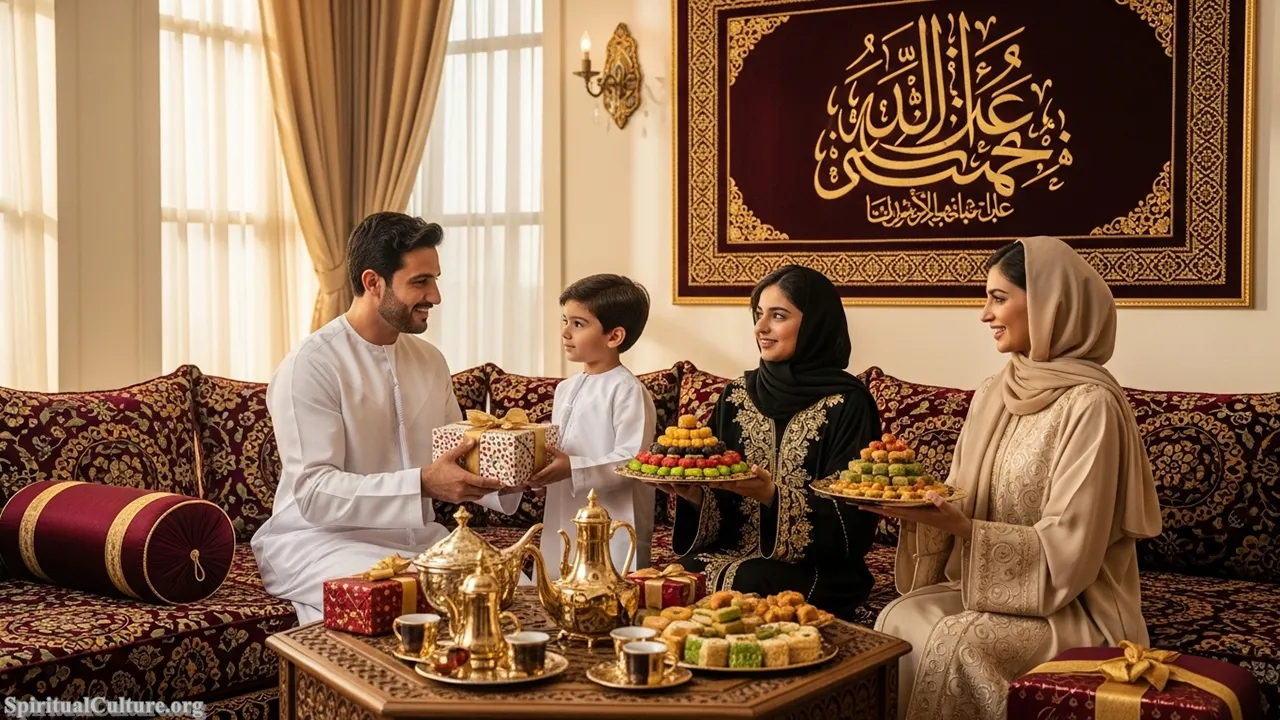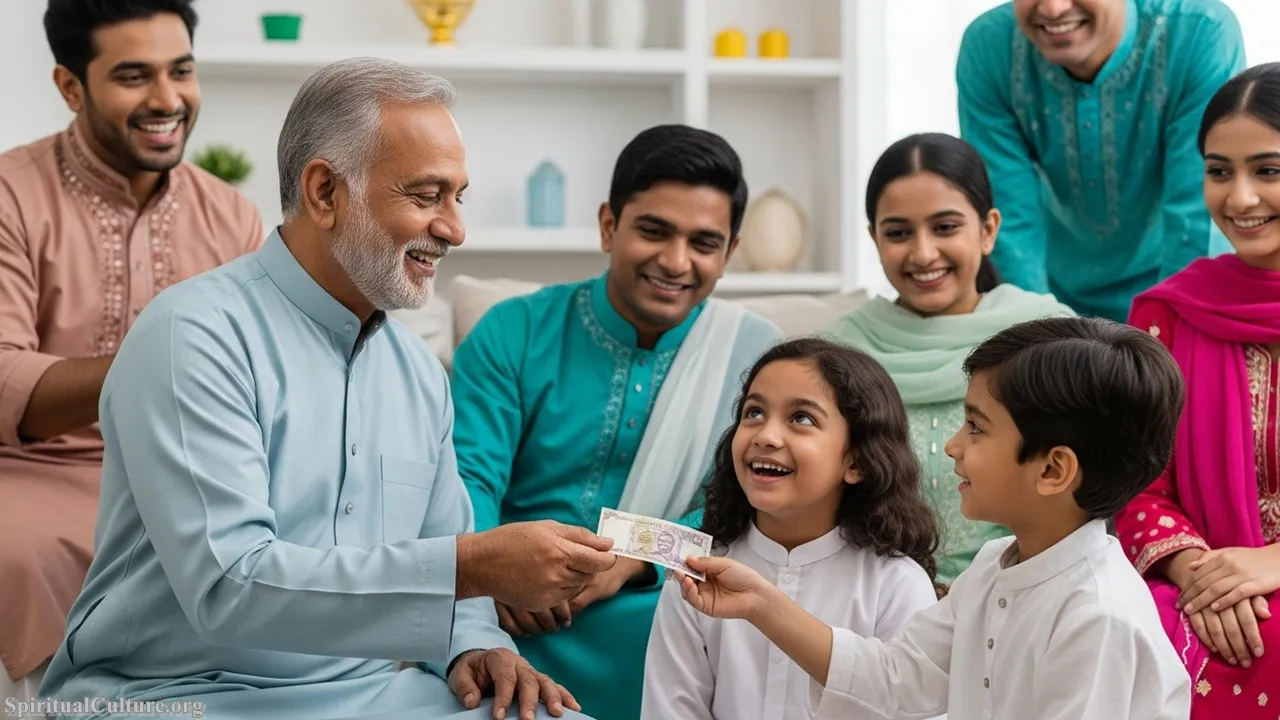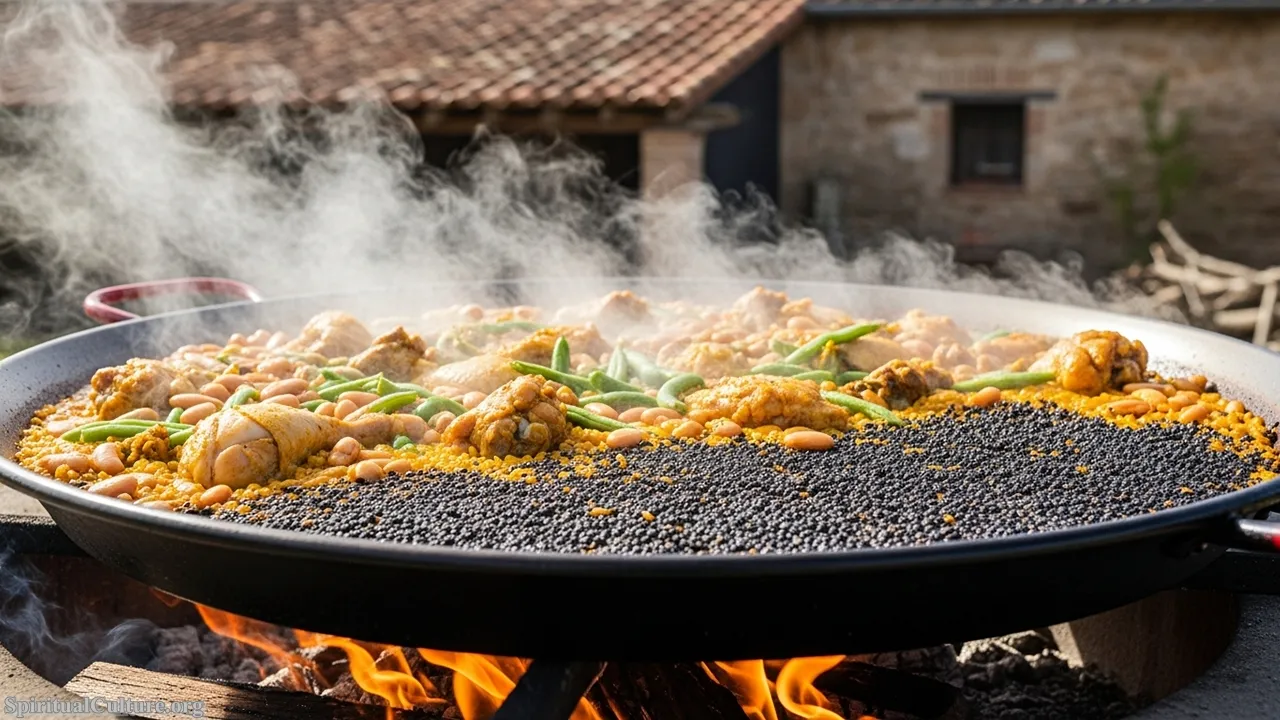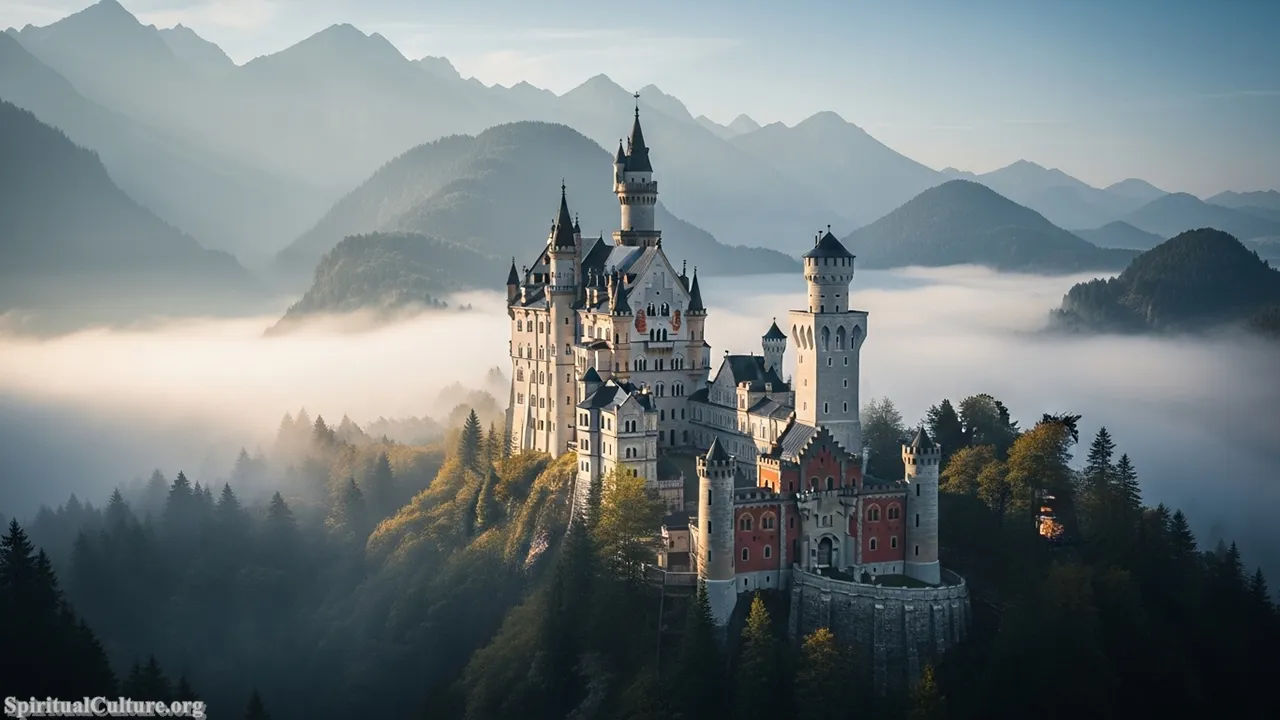Doha, the luminous capital of Qatar, has rapidly emerged as a powerful global nexus where ancient Arabian heritage meets stunning 21st-century architecture. This transformation is not merely one of skyline development, but a profound cultural project aimed at celebrating the spiritual and historical depth of the region while fostering global dialogue.
The city’s cultural attractions, ranging from meticulously preserved historical markets to world-class modern museums, serve as crucial touchpoints for understanding the Qatari soul. They represent the nation’s journey from a humble pearling port to a major international hub, all while maintaining a deep reverence for Islamic traditions and Arab identity. As of the Current Time of Writing, Doha’s commitment to culture is evident in its continuously expanding portfolio of accessible, high-quality heritage sites.
At Spiritual Culture, we assess these attractions not just by visitor numbers, but by their spiritual impact—the way they connect visitors to timeless values, historical continuity, and the profound artistic expressions of Islamic civilization. The following ranking is based on a blend of verified popularity, historical significance, and intrinsic spiritual/cultural value, offering a guide to the places that most resonate with the human spirit in Doha today.
Table of the Top 10 Cultural Attractions in Doha by Spiritual and Cultural Significance
| Rank | Attraction Name | Primary Cultural Value | Spiritual Significance | E-A-T Fact Highlight (Current Time of Writing) |
|---|---|---|---|---|
| 1 | Museum of Islamic Art (MIA) | Islamic Civilisation & Global Artistry | Beacon of Faith, Intellectual & Artistic Unity | Designed by I.M. Pei, collection spans 1,400 years of Islamic art from three continents. |
| 2 | Souq Waqif | Traditional Commerce & Community Life | Authentic continuity of Arabian/Bedouin heritage and community spirit. | An actively functioning historical market, central to Qatari cultural identity and daily life. |
| 3 | National Museum of Qatar (NMoQ) | Qatar’s History & National Identity | A pilgrimage reflecting the nation’s spiritual and physical journey from past to future. | Inspired by the desert rose; surrounding the original palace of Sheikh Abdullah Bin Jassim Al Thani. |
| 4 | Katara Cultural Village | Interfaith Dialogue & Arts Hub | Platform for cultural exchange and celebrating artistic expression rooted in faith. | Features a Greek-style amphitheater alongside a stunning Katara Mosque and various art spaces. |
| 5 | Imam Muhammad bin Abdul Wahhab Mosque (State Grand Mosque) | Worship & Modern Islamic Architecture | The largest centre for congregational prayer, symbolising national piety and faith. | Can host over 30,000 worshippers; reflects traditional Qatari architectural style. |
| 6 | Msheireb Downtown Doha | Sustainable Heritage & Urban Regeneration | Honouring ancestral design principles while promoting a sustainable, reflective lifestyle. | One of the world’s first sustainable downtown regeneration projects; home to Msheireb Museums. |
| 7 | Doha Corniche & MIA Park | Public Promenade & Skyline View | A place for reflection, connecting the natural world (sea) with the modern spiritual landscape. | Features Richard Serra’s public art “7”, inspired by the spiritual significance of the number. |
| 8 | The Pearl-Qatar | Modern Lifestyle & Former Pearl-Diving Site | A monument to the enduring wealth and legacy of the historical pearl-diving trade. | Artificial island built on a former major pearl-diving site, symbolising the nation’s economic roots. |
| 9 | Al Fanar (Abdullah Bin Zaid Al Mahmoud Islamic Cultural Center) | Cultural Education & Outreach | A centre for learning and sharing the fundamentals of Islamic faith and heritage. | Distinguished by its iconic spiral minaret; offers classes and tours on Islamic culture. |
| 10 | Mathaf: Arab Museum of Modern Art | Contemporary Arab Art & Identity | Showcasing the ongoing spiritual and social reflections of the modern Arab world. | Dedicated to exhibiting and preserving modern and contemporary art from the Arab world. |
#10. Mathaf: Arab Museum of Modern Art
The Mathaf: Arab Museum of Modern Art serves as a vital cultural platform, dedicated to collecting and exhibiting modern and contemporary art with a specific focus on the Arab world. This institution challenges traditional, often Western-centric, narratives of art history, ensuring that the unique spiritual and socio-political reflections of Arab artists are preserved and celebrated for a global audience. As of the Current Time of Writing, Mathaf’s significance lies in its role as a dynamic repository of ongoing cultural conversation, positioning Doha as a thought leader in global contemporary art.
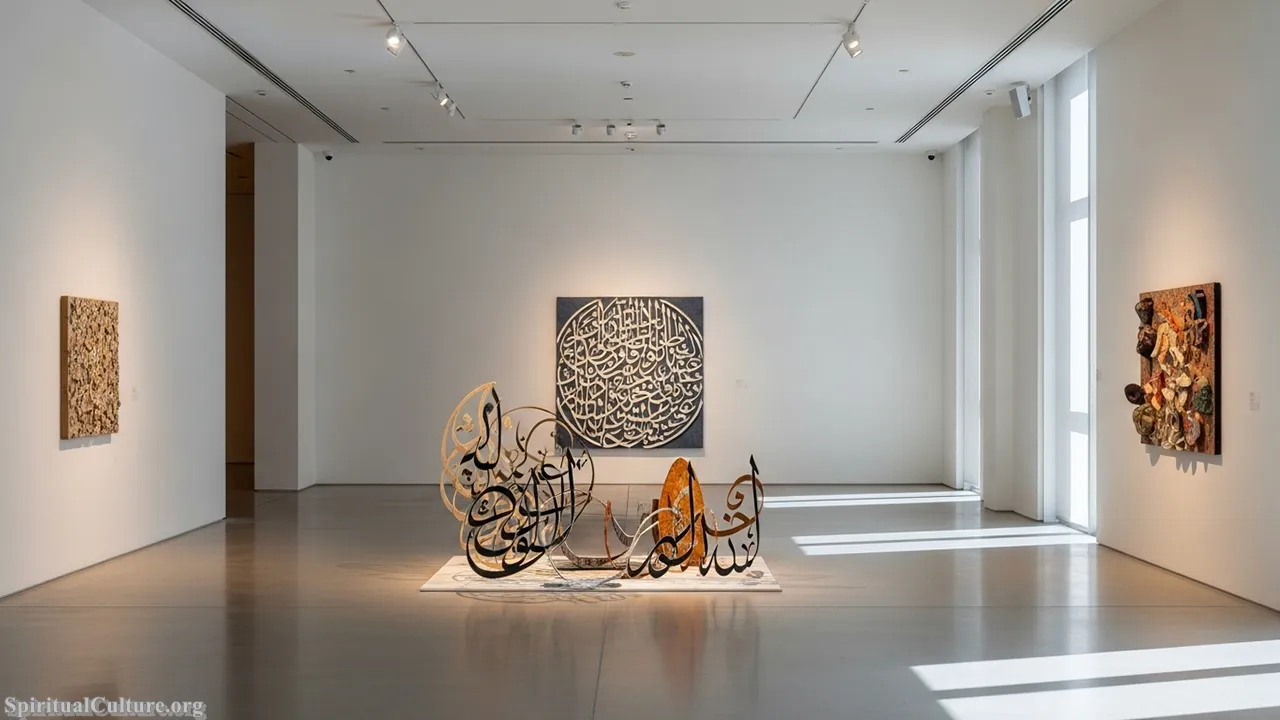
Its spiritual impact stems from its commitment to visualising the modern Arab identity in all its complexity—a continuous process of reflection and expression that is deeply rooted in humanistic values. The art displayed here often tackles themes of exile, faith, transformation, and cultural memory, which are profoundly spiritual struggles. By giving voice and form to these contemporary spiritual and cultural inquiries, Mathaf demonstrates that heritage is not static, but a living, evolving dialogue.
The preservation value of Mathaf is immense, as it establishes a permanent, institutional context for the study of Arab art, ensuring that these contemporary spiritual reflections endure. It reminds us that culture is a continuous stream, urging us to respect and engage with the present-day struggles and aspirations of a people shaped by both ancient faith and modern globalism. This active cultural curation is a noble spiritual act in itself.
Cultural/Spiritual Highlights:
- Showcases modern artistic interpretations of Arab and Islamic identity.
- Dedicated solely to the contemporary art production of the Arab world and diaspora.
- The collections explore spiritual themes of displacement, memory, and social change.
#9. Al Fanar (Abdullah Bin Zaid Al Mahmoud Islamic Cultural Center)
Al Fanar, formally known as the Abdullah Bin Zaid Al Mahmoud Islamic Cultural Center, is one of Doha’s most visually striking and significant educational institutions. While its iconic spiral minaret commands the skyline, its primary function is rooted in cultural outreach and education. This center actively hosts programmes, classes, and tours aimed at non-Muslim visitors, making it a critical bridge for promoting interfaith understanding and sharing the fundamentals of Islamic faith and Qatari heritage.
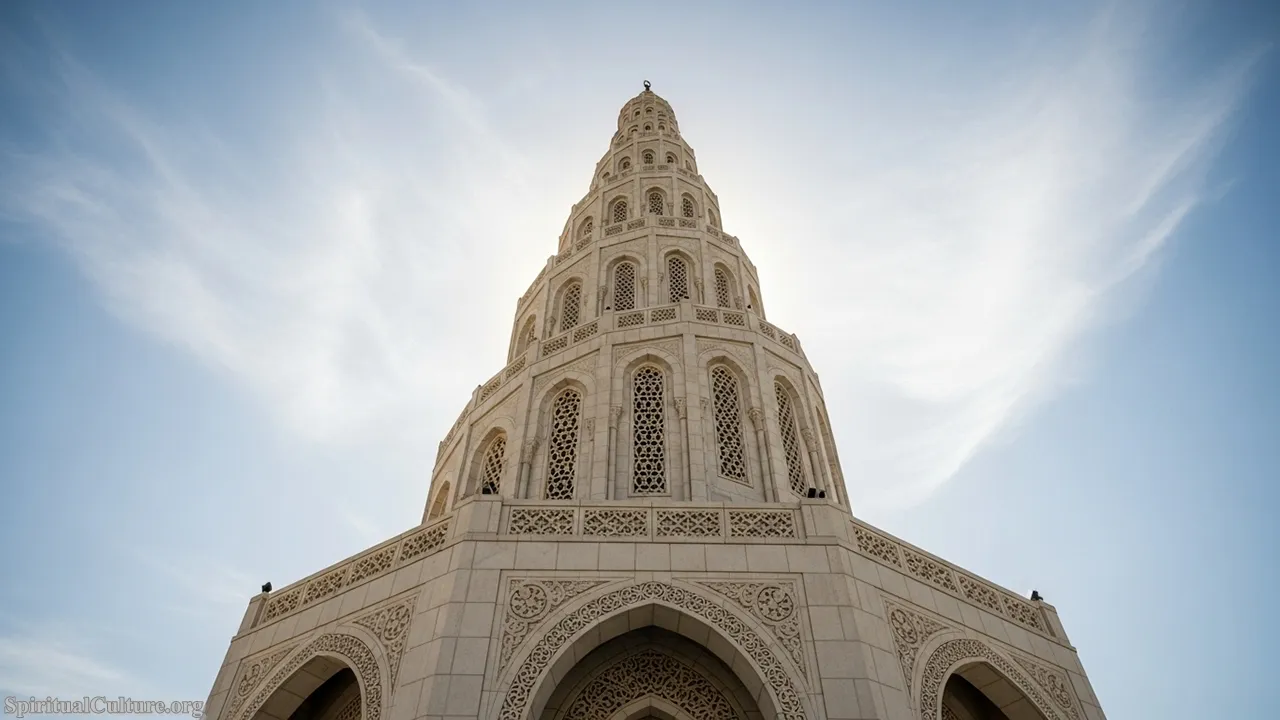
The spiritual impact of Al Fanar is fundamentally about Da’wah, or the call to faith and understanding, enacted through hospitality and education. It demystifies the practices and principles of Islam, offering an accessible entry point to the faith’s core tenets, such as the Five Pillars. Its very existence, highlighted by the minaret’s upward-spiralling design, symbolises the continual ascent toward knowledge and spiritual truth, fostering an environment of curiosity and respect.
Its preservation value lies not in ancient stone, but in the conservation of knowledge and the tradition of intellectual engagement. Al Fanar preserves the spirit of learning and hospitality that is central to Islamic culture, ensuring that newcomers to Doha can engage with the local spiritual landscape on an informed and respectful basis. It stands as a beacon for clarity and dialogue in an often-misunderstood world.
Cultural/Spiritual Highlights:
- Iconic spiral minaret is a modern architectural landmark.
- Primary function is cultural outreach and education about Islam.
- Named after a renowned 20th-century Qatari scholar and founder of the judicial system.
#8. The Pearl-Qatar
The Pearl-Qatar, a sprawling man-made island, represents Doha’s vision for a luxurious, modern future, but it is deeply anchored in a powerful cultural history. The island is intentionally built on the site of a former major pearl-diving area, directly linking the new economic prosperity to the nation’s arduous maritime past. This connection is not merely geographic; it is a conscious act of memorialising the source of Qatar’s original wealth and the foundational toil of its people.

The spiritual significance of The Pearl is one of honouring the memory and risk-taking inherent in the pearl-diving economy—a heritage built on faith, community, and the unpredictability of the sea. While it manifests as a luxury residential and leisure hub in the Current Time of Writing, the site implicitly pays homage to the divers (al-Ghawwas) whose spiritual resilience defined early Qatari culture. The land reclamation is, in a profound sense, reclaiming the narrative of the sea that both sustained and challenged the ancestors.
The Pearl’s reflective value encourages us to contemplate the swift transition of Qatar from a subsistence economy to a global energy power. It is a monument to transformative progress, yet it subtly reminds visitors that true wealth is built upon the foundation of ancestral struggle and the unity of a community dependent on the sea. Its ongoing development ensures that the memory of the “old life” is woven into the very fabric of the new.
Cultural/Spiritual Highlights:
- Built on the site of a historical major pearl-diving ground.
- Its development honours the maritime heritage that was Qatar’s original economy.
- The name and location are a deliberate nod to the ‘Mother of Pearl’ trade.
#7. Doha Corniche & MIA Park
The Doha Corniche is a scenic, seven-kilometre crescent promenade that sweeps along Doha Bay, offering uninterrupted views of the West Bay skyline. It functions as the city’s largest public space for leisurely walks, exercise, and contemplation, serving as the connective tissue between the historical heart of Doha and its futuristic West Bay district. MIA Park, at the Corniche’s southern tip, extends this public space, notably featuring the acclaimed public sculpture “7” by Richard Serra, which adds a powerful contemporary cultural dimension to the area as of the Current Time of Writing.

The spiritual impact of the Corniche is rooted in its role as a place of reflection, a liminal space between the modern built environment and the vast, eternal Arabian Gulf. It is where families gather and individuals seek quiet solace, allowing them to connect with the natural elements—the sea, the wind, and the expansive sky—which have always been integral to the spiritual life of the Gulf region. Richard Serra’s monumental work, ‘7’, further deepens this, as the number seven holds profound spiritual significance in Islamic culture, linking the abstract geometry of faith to the public, physical space.
This attraction underscores the value of public space in the human spirit, demonstrating that even a modern city requires accessible areas for community and quiet contemplation. The continuous presence of the sea reminds us of life’s boundless nature and the historical importance of the ocean as a spiritual and economic lifeline for the region. The Corniche is Doha’s collective gathering place, a living testament to shared civic life.
Cultural/Spiritual Highlights:
- Largest public gathering and walking space in Doha.
- Features ‘7’ by Richard Serra, a sculpture referencing Islamic spiritual geometry.
- Connects the historical heart (Souq Waqif) with the modern metropolis (West Bay).
#6. Msheireb Downtown Doha
Msheireb Downtown Doha represents one of the world’s most ambitious urban regeneration projects, meticulously designed to revive the historical heart of the city using sustainable and traditional Qatari architectural principles. This new district consciously looks to the past to inform the future, prioritising walkability, shade, and communal courtyards—a traditional response to the desert climate and a model for sustainable urban living. The Msheireb Museums, housed within four preserved heritage houses, are central to its cultural significance in the Current Time of Writing, detailing the history of the nation and its people.
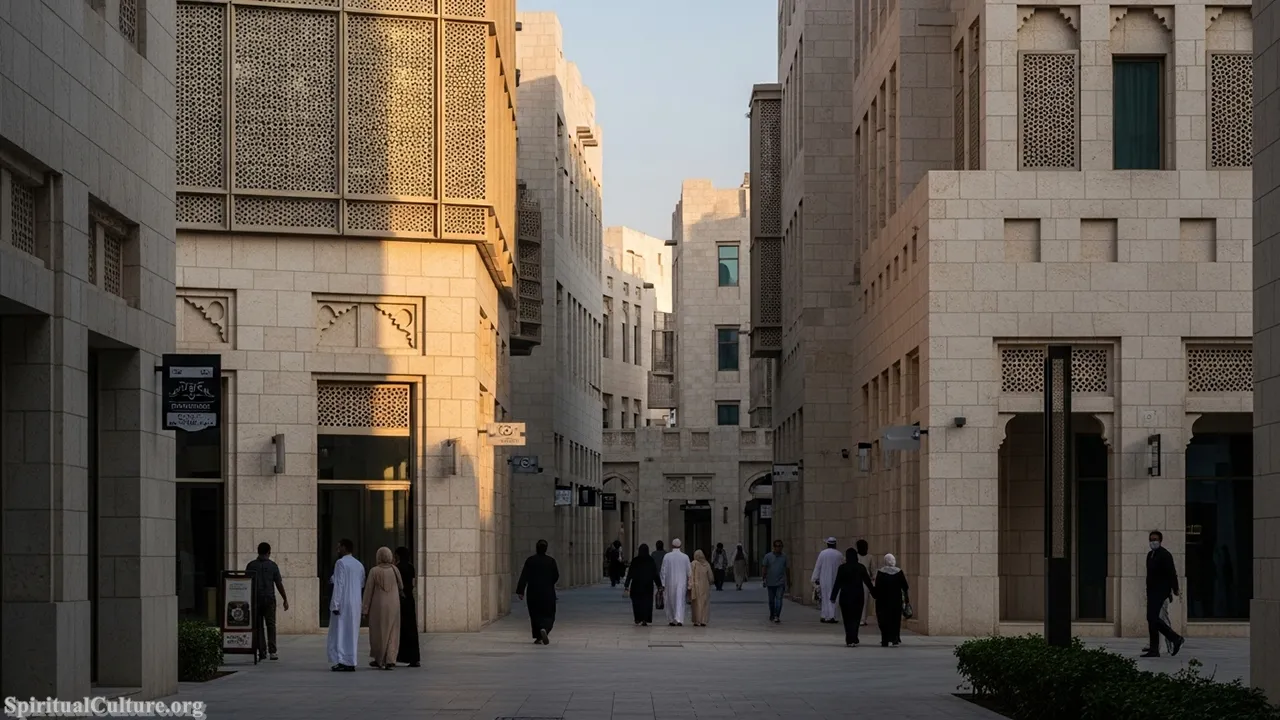
The spiritual impact of Msheireb is rooted in the concept of baraka (blessing/sacred energy) derived from honouring ancestral wisdom and promoting an ethical relationship with the environment. By employing passive cooling techniques and traditional forms, the district embodies the Islamic principle of stewardship (Amana) and sensible living. The museums within the complex serve as meditative spaces, urging visitors to reflect on the moral and social history of Qatari society.
Msheireb’s value lies in its philosophical commitment to sustainable heritage. It is a powerful example for cities worldwide, proving that modernity does not require the wholesale abandonment of the past; rather, it can be enriched by it. The project preserves the intangible social fabric of old Doha—the sense of closeness and community—by recreating the physical spaces that nurtured it.
Cultural/Spiritual Highlights:
- World’s first sustainable downtown regeneration project rooted in Qatari heritage.
- The architecture revives traditional forms like shaded alleys and communal courtyards.
- Home to the Msheireb Museums, preserving houses dedicated to Qatari social history.
#5. Imam Muhammad bin Abdul Wahhab Mosque (State Grand Mosque)
The Imam Muhammad bin Abdul Wahhab Mosque, known as the State Grand Mosque, is the largest mosque in Qatar, standing as a striking contemporary interpretation of traditional Qatari Islamic architecture. Opened in 2011, its massive scale and elegant, understated design—featuring 93 domes and a beautiful sandstone exterior—make it a major spiritual and architectural landmark. It serves as a central hub for congregational worship, attracting tens of thousands of worshippers for major prayers and religious holidays throughout the year, affirming its cultural centrality.
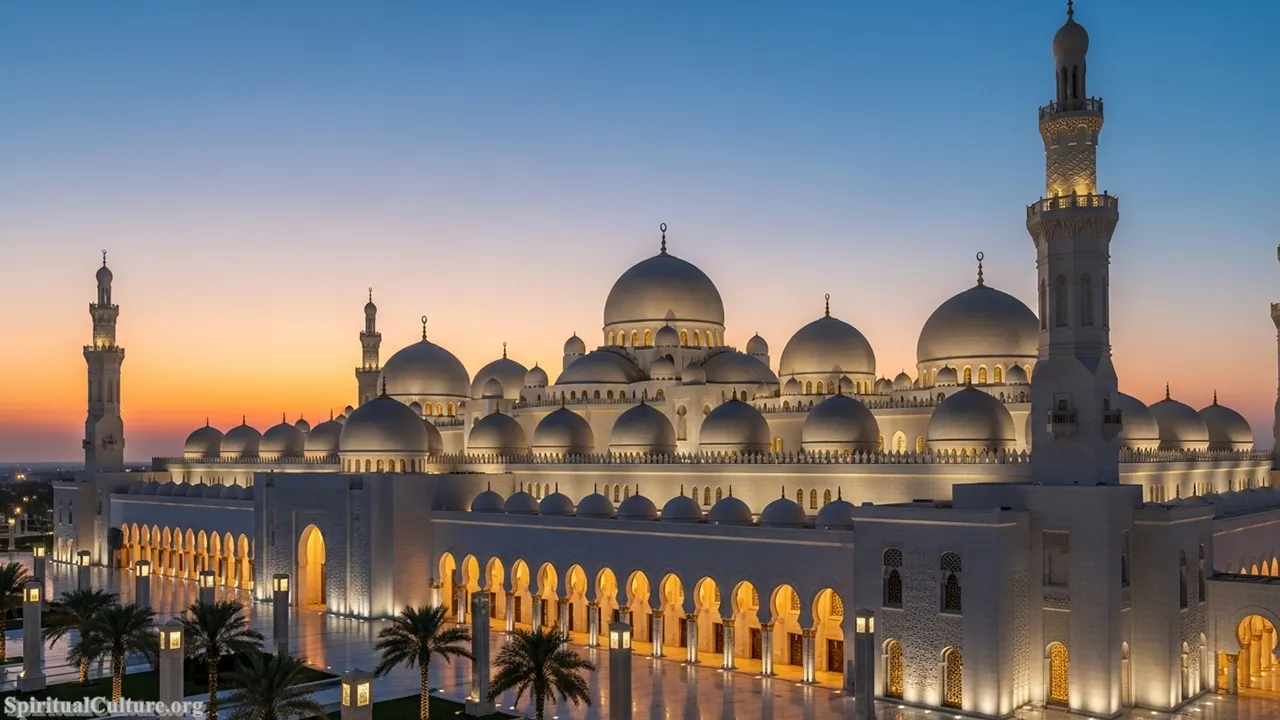
The spiritual significance is immediate and profound, as it is a place dedicated entirely to Salat (prayer), one of the Five Pillars of Islam. The vast, simple interior is designed to eliminate distraction and foster khushu (sincerity and devotion) in prayer, symbolically uniting the nation’s adherents under a single roof. The mosque’s sheer size reflects the country’s devotion to faith and its provision for the spiritual needs of its burgeoning population, demonstrating the central role of Islam in Qatari national identity.
Its preservation value is linked to the preservation of faith itself and its outward expression. The State Grand Mosque maintains a visual link to historical Qatari mosques through its design while adapting to modern functional requirements, offering a space that can host over 30,000 worshippers. It is a powerful cultural testament to the enduring, unwavering piety of the Qatari state and its citizens.
Cultural/Spiritual Highlights:
- The largest mosque in Qatar, capable of hosting over 30,000 worshippers.
- Features 93 domes and a design inspired by traditional Qatari architectural forms.
- A central symbol of the nation’s commitment to the Islamic faith.
#4. Katara Cultural Village
Katara Cultural Village is a unique, dedicated cultural and entertainment complex on the Doha coast that explicitly aims to promote cross-cultural understanding and artistic exchange. Unlike a traditional historical site, Katara is a modern construct that intentionally houses a mosaic of cultural facilities, including art galleries, performance venues, and the exquisitely tiled Katara Mosque, making it a dynamic intersection of global and local arts. It functions as Doha’s premier platform for large-scale festivals and dialogue, celebrating the diverse global influences that interact with Arab culture as of the Current Time of Writing.
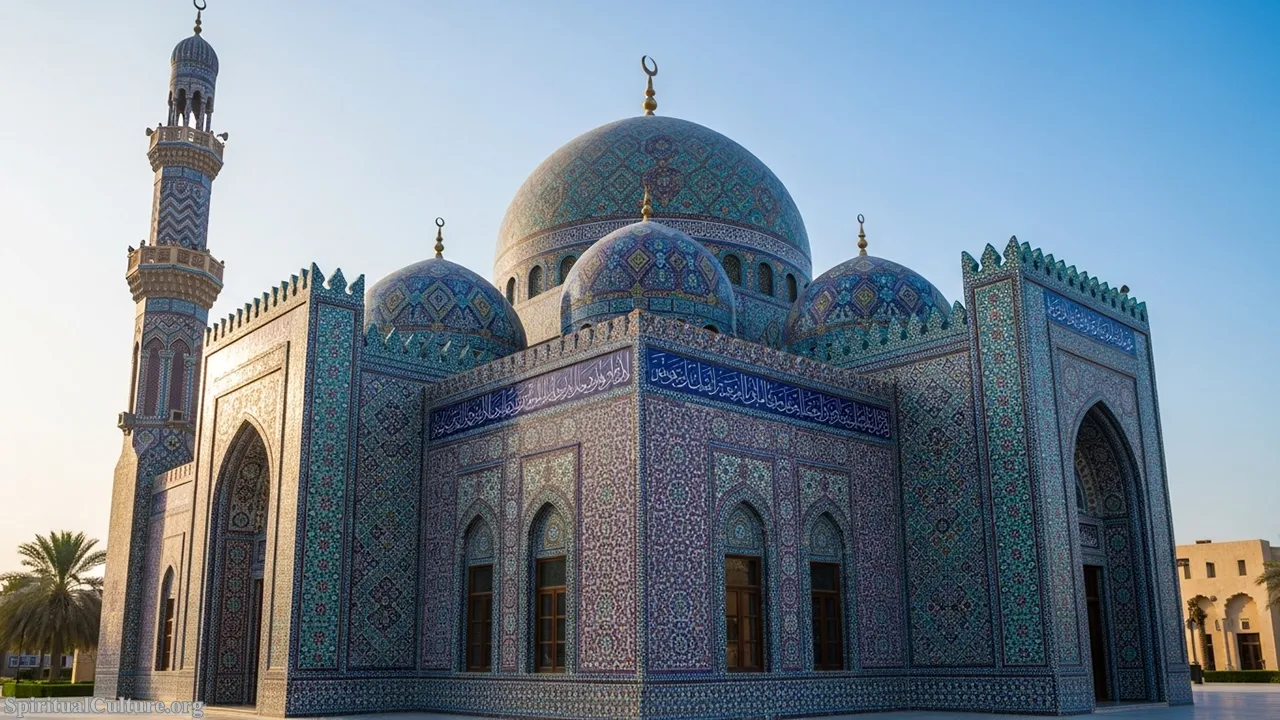
The spiritual impact of Katara is found in its mission: to act as a global bridge between civilisations and cultures. Its design, which blends traditional Qatari architecture with features like an open-air Greek-style amphitheatre, symbolises a welcoming posture towards the world, rooted in a confident Arab identity. The village actively promotes the spiritual value of dialogue, mutual respect, and the recognition of the divine spark expressed through universal artistic creation, from opera to calligraphy.
The village’s preservation value lies in its role as a living library of cultural practice, a space where traditions are actively performed, taught, and evolved rather than merely displayed behind glass. It is a celebration of human creativity, fostering the belief that the arts—in all their forms—are essential tools for spiritual growth and connecting diverse human communities.
Cultural/Spiritual Highlights:
- Dedicated to fostering cultural exchange and interfaith dialogue.
- Features an open-air amphitheater and the visually stunning Katara Mosque.
- A modern hub for cultural festivals, performance arts, and creative workshops.
#3. National Museum of Qatar (NMoQ)
The National Museum of Qatar (NMoQ) is one of Doha’s most revered cultural institutions, telling the complete story of Qatar across three chapters: Beginnings, Life in Qatar, and The Modern History of Qatar. Architecturally, it is a masterpiece, designed by Jean Nouvel to resemble the crystalline formation of a desert rose, a profound and fitting visual symbol for the nation. It enshrines the original palace of Sheikh Abdullah Bin Jassim Al Thani, ensuring that the heart of the national story remains physically embedded within the modern structure, giving it enormous historical weight as of the Current Time of Writing.
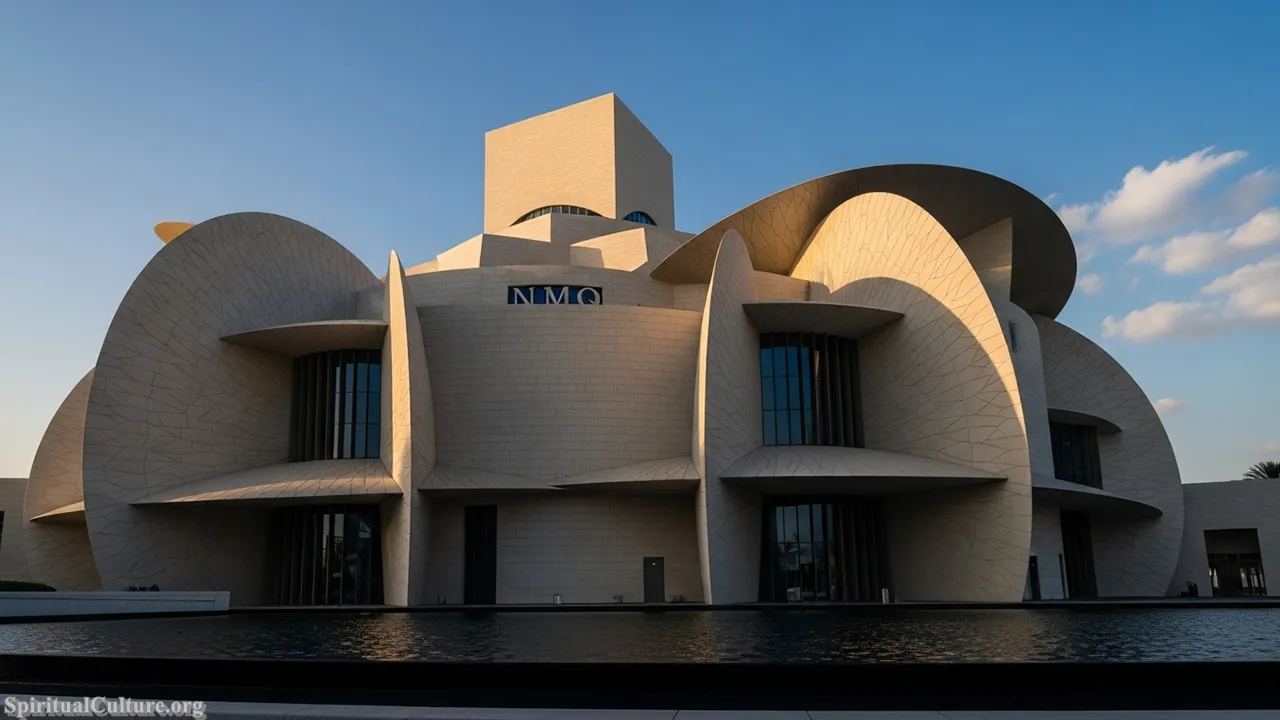
The museum’s spiritual impact is akin to a national pilgrimage. Walking through its galleries is a journey of introspection, reflecting on the challenges and resilience that shaped the Qatari identity—from the harsh environment and the spiritual reliance on the sea to the formation of the modern state. The preservation of the Old Palace within the new complex reinforces the spiritual continuity of governance and leadership, linking contemporary authority directly back to its humble, founding roots.
The profound value of the NMoQ is in the preservation of the Qatari narrative itself. It educates both citizens and visitors on the spiritual and physical efforts required to transform a desert peninsula into a major global power, ensuring that the nation never forgets the struggles and spiritual fortitude of its ancestors. It stands as a powerful testament to national memory and an inspiring vision of future possibility.
Cultural/Spiritual Highlights:
- Architecturally designed to resemble the desert rose, symbolising the environment.
- The narrative traces Qatar’s history from pre-history to the present day.
- The structure incorporates the historic Palace of Sheikh Abdullah Bin Jassim Al Thani.
#2. Souq Waqif
Souq Waqif, meaning “standing market,” is the historical commercial and social heart of Doha, an authentic marketplace meticulously restored to evoke the atmosphere of the 19th-century trading era. It remains a vibrant, actively functioning space where traditions like falconry, spice trading, and Arabic coffee culture are preserved and practised daily. Unlike a museum, the Souq is a living cultural organism, providing an essential and sensory link to the nation’s pre-oil past and acting as a cornerstone of Qatari community life in the Current Time of Writing.
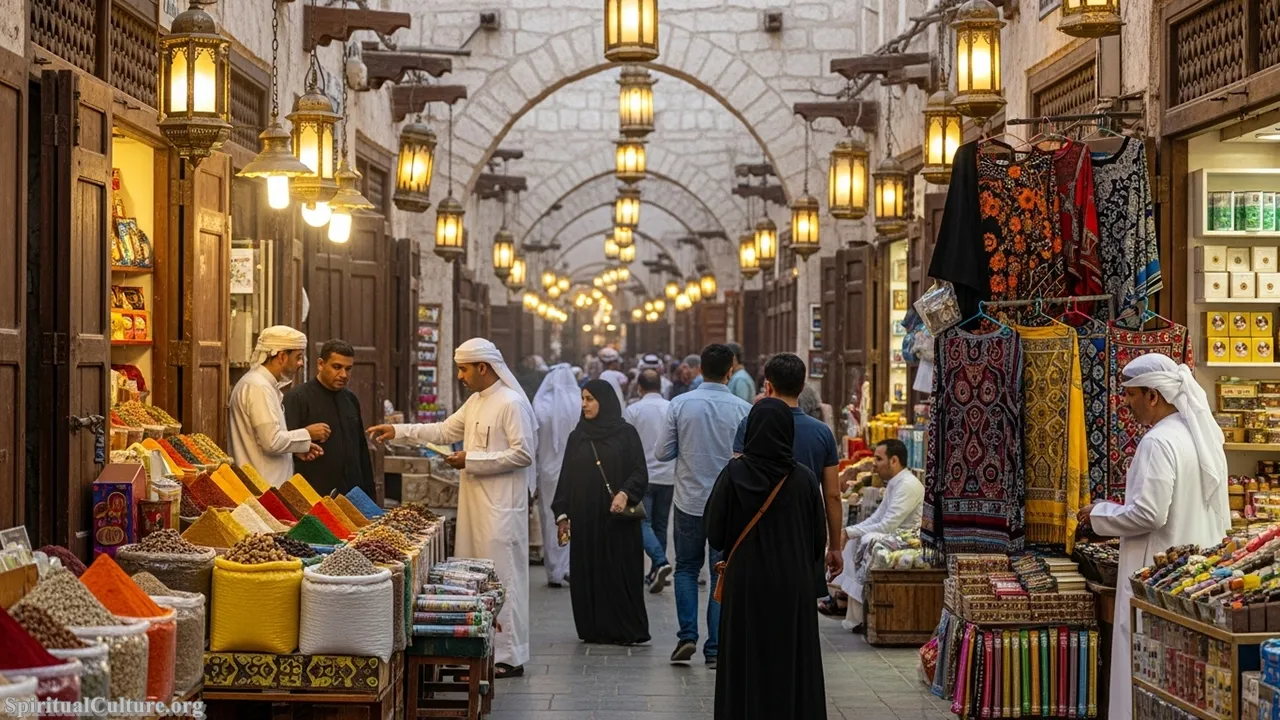
The spiritual impact of the Souq is found in its continuity and its embodiment of traditional communal spiritual values, such as karam (generosity/hospitality) and the central importance of social gathering. The Souq fosters a unique spiritual energy—the Baraka of the marketplace—where human connection, honest trade, and shared experience are paramount. It offers a tangible, multi-sensory immersion into the unhurried rhythms and spiritual resilience of traditional Arabian life that shaped the Qatari character.
Souq Waqif’s preservation value is unsurpassed because it ensures that the physical and social structures of the past continue to inform the present. By maintaining its role as the city’s primary social hub, it preserves the vital spirit of community, reminding a modern, fast-paced society of the enduring beauty and humanistic values found in simplicity, shared space, and cultural tradition.
Cultural/Spiritual Highlights:
- Authentic, meticulously restored traditional marketplace and social hub.
- Preserves key cultural practices like falconry, spice trade, and traditional crafts.
- Embodies the enduring spiritual values of Arabian communal life and hospitality.
#1. Museum of Islamic Art (MIA)
The Museum of Islamic Art (MIA) stands as the undisputed cultural and spiritual pinnacle of Doha, an architectural masterwork by I.M. Pei, majestically positioned on a man-made island off the Corniche. Its collection is extraordinary, spanning 1,400 years and three continents, showcasing masterpieces of Islamic art that include rare manuscripts of the Quran, textiles, ceramics, and metalwork. Having undergone a significant renovation, the MIA continues to shine as a premier global institution for understanding the breadth and depth of Islamic civilisation as of the Current Time of Writing.

The spiritual significance of MIA is profound: it is a beacon of intellectual and artistic unity, demonstrating how the singular faith of Islam inspired diverse cultural expressions across a vast geographic expanse over centuries. Its exhibits transcend mere aesthetics, offering visual meditations on the core Islamic concepts of God’s unity (Tawhid) expressed through geometric patterns, and the beauty of the written word (calligraphy). The architecture itself, with its minimalist form and veiled face, evokes the essential, reflective nature of sacred space.
The museum’s supreme preservation value lies in its role as the definitive global centre for the dissemination and appreciation of Islamic cultural heritage, fostering critical cross-cultural dialogue. MIA does not just preserve art; it preserves the story of a civilisation rooted in knowledge, innovation, and faith, offering visitors a genuinely spiritual experience that connects them to the enduring legacy of the Ummah (global Muslim community).
Cultural/Spiritual Highlights:
- Holds a collection spanning 1,400 years of Islamic art from around the world.
- Designed by Pritzker Prize-winner I.M. Pei; architecture is influenced by traditional Islamic forms.
- The artifacts reflect the spiritual and intellectual achievements of Islamic civilisation.
- Positioned on an island, providing a symbolic separation for contemplation and reflection.
Conclusion
Doha’s cultural landscape is a magnificent tapestry woven from the threads of ancient faith, historical resilience, and breathtaking contemporary vision. From the bustling, warm heart of the Souq Waqif to the serene, intellectual contemplation offered by the Museum of Islamic Art, the city’s top cultural attractions are more than tourist destinations—they are profound statements of identity.
At Spiritual Culture, we celebrate Doha as a city that has masterfully harnessed its rapid development to re-center its spiritual and cultural heritage. Each site, whether it is the mosque that unites tens of thousands in prayer or the museum that unites the world through art, offers a moment of reflection and a deeper understanding of the enduring human spirit. Doha invites us not just to observe, but to participate in the dynamic, evolving story of Arab and Islamic civilization.
